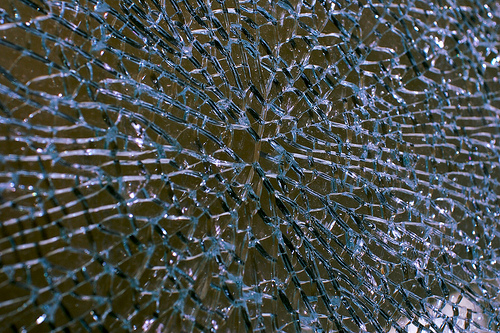Direct influence
Situations where we have influence come in two flavors: direct influence and indirect influence. Direct influence means that we can take specific steps to try to get the thing done. For instance, a person who wants a raise can usually go to his or her boss and request one, and someone who wants to be treated better by another person can confront that person.
Indirect influence
Indirect influence means that we can only take actions that encourage the results we want, but can’t control them or even push for a decision. Some examples of indirect influence are practicing more in order to have a better chance of winning a talent contest or writing letters to a representative to encourage a particular vote.
Social influence diagram by Bruce Dupree, via Anne Adrian.
Following up on last week’s articles “Dealing With Problems That Can’t Be Fixed” and “When Is It Time to Make a Change?“, today’s article takes a look at the possibilities and consequences of fixing a situation by leaving it.
When there’s no way to get away
Leaving isn’t always an option. For example, if the problem is affecting a place, person, or group of people you care about–say, your brother-in-law has a drinking problem, or your hometown has gone into a bad economic slump–then getting isn’t likely to help. Even when leaving the problem behind physically won’t help, though, it’s sometimes possible to leave emotionally, which is to say stop caring about the situation. Ceasing to care about things is often not a helpful approach, and even when it is advisable, it isn’t always easy. Yet ceasing to care can sometimes be the best choice, especially if an activity or relationship is involved that wasn’t that healthy or appropriate in the first place, as with ending a friendship with someone who’s been a destructive influence.
What’s lost, what’s gained, and what the break will cost
When leaving is an option, it can help to become clear on the three kinds of things that are affected when we leave a situation: what’s lost by leaving the situation behind, what’s gained by leaving it, and what damage (or benefits) might result from the leaving itself. For instance, leaving a job can be a way of ending an intolerable work relationship with a boss or coworker (a key cause of unhappiness at work, according to the Gallup Group’s investigations on well-being) but may cause uncertainty with your income, increase or decrease your commute, open up new opportunities, threaten rifts between you and others still working at or with the place you left, create a situation that will tend to make a spouse relieved or fearful, and so on. Not all of these costs and benefits may be apparent at the beginning, and some will not be predictable, such as unexpected opportunities and the emotional impact of the change.
Ways to think about leaving
One of the most useful things we can do when thinking about leaving a situation is to bring to light all of our fears, concerns, and hopes that may make us want to leave or stay and to try to find any broken ideas (thoughts that cause bad feelings by misleading us in subtle ways) that may be causing pain now, preventing progress, or threatening the future. Two good ways of bringing out these kinds of thoughts are writing them out on paper or on a computer or talking about the situation with a sympathetic friend who’s a good listener.
Some examples of kinds of thoughts worth looking at:
- Fears of what will happen if you do leave
- Fears of what will happen if you don’t leave
- Assumptions about your current situation that may or may not be accurate
- Concerns about how other people will judge a decision to leave
- Hopes for opportunities that might open up
- Overly-limiting ideas about who you are and what you’re capable of doing
- People who would be affected by a change, including whether it’s you or someone else who would be most affected
- What kinds of life complications would go away or be added by leaving
A “pros and cons” list can be useful, but it’s unlikely to provide an obvious answer, even if the list is much longer on one side than the other, since different items in a list can have very different levels of importance. Seeing the two sides of the issue laid out like this, though, can make it much easier to balance out the the possibilities the situation offers, provided all the key points are covered. One very useful approach is to spend days or even weeks coming back to the list and adding to it whenever new ideas occur, then considering both sides carefully and sleeping on it, letting a decision emerge naturally.
From all my talk about how idea repair can be used to deal with negative emotions–anger, sadness, fear, etc.–you might get the sense I’m trying to say that negative emotions are always a bad thing. Yet negative emotions can serve the purpose of focusing our attention where it’s needed (see “The Benefits of Feeling Bad“). So when is a negative emotion helpful and when is it just a drag?
If the problem in front of you can be changed and acted upon, then there are some questions to ask, and I’ll talk about these in a near-future post. But if the problem can’t be fixed, then the choice is simply between a) having the problem and being miserable and b) having the problem but being happy anyway.
If you’re in a situation that is not going to change on its own, can’t be changed by you, and can’t be avoided (or is too important to avoid), then the only thing left to do is to change your feelings toward the situation. This requires surrender and being willing to find and repair broken ideas about the problem, something that’s not easy for most of us. After all, we’re generally taught that if something is broken, someone should fix it. Not many of us are raised to deal comfortably with things that can’t be fixed.
Things that will fix themselves or that can be fixed by you but that will take some time to get there also require surrender and idea repair (or the equivalent) if you don’t want to be miserable in the mean time. For example, if you’re in a very bad financial situation that won’t get any better until your house sells, then you have the choice of being miserable until your house sells or of dealing with your feelings immediately, even though the situation will go away in future. Unfortunately, temporary problems often weigh on us just as heavily as permanent ones, and call for the same strategies if we want to stop them from causing pain.
The benefits of reconciling ourselves to things we can’t change come whether the problem is large or small, fair or unfair, permanent or temporary, our fault or someone else’s fault or no one’s fault: letting go of negative emotions that can’t be acted upon creates a happier daily existence and clears the mind to focus on situations where we can make a different right now.
I’ve often pictured a sudden mental transformation, fantasized that some particular idea would click into place and immediately, some behavior I’d been wanting to change for a long time would change without any further great effort required from me. Can willpower really work that way?
Generally speaking, the answer is no. Habits are ingrained over a long period of time: neural connections in our brains don’t change in large ways all of a sudden except in the case of brain damage. Habits reflect repeatedly strengthened neural connections–basically, we’ve done something over and over so much that it becomes hardly any effort to keep doing it.
There are exceptions, but they’re special cases. For instance, if I go to the doctor and find out that I will drop dead the next time I have a bite of ice cream (fortunately, not a very likely diagnosis), then I can pretty much guarantee you I will never have a bite of ice cream again. But these kinds of changes in behavior are fueled by drastic, unavoidable consequences based on clear-cut behaviors. Most goals don’t fit that description.
But even though we usually can’t experience immediate habit change, we can experience immediate behavior change. If we adopt tactics that help us be mindful of what we’re doing and that keep us in close touch with the consequences, we can see progress right away. While this isn’t the kind of dramatic change many of us would like, it does yield immediate benefits and lead to the end we have in mind, even as it gets easier and easier over time to repeat the good acts we’re learning.
Photo by Thomas Hawk
As an extreme example, consider a heroin addict: taking heroin will make this person feel really good–for a little while. Then, when the drug wears off, the addict is left to face whatever problems the heroin was meant to be an escape from, plus whatever problems shooting up has caused–like getting arrested or using the rent to buy drugs, for instance. The bad choice of taking the drug causes bad situations that make the addict unhappy, so that taking more of the drug is that much more appealing, as a way to escape the unhappiness.
I most often use the phrase “feedback loop” to refer to the helpful kind of feedback, like journaling several times a week while working toward a goal. This kind of feedback loop provides a way to look at progress and trouble over the past few days and try out corrections that themselves will be looked at during the next feedback loop (which is what makes it a loop). But there are different kinds of feedback loops that can work against us, like the addict, his troubles, and his needle.
All which is to say that bad choices and unhappiness work together to cause more bad choices and unhappiness. Weirdly enough, this is good news, because it means that if either the behavior or the unhappiness is interrupted, both the behavior and the unhappiness can be lessened.
Getting back to our drug addict (who in a very general sense is in the same kind of bad feedback loop as someone who overeats or doesn’t do the dishes regularly or avoids calling back clients when something goes wrong), this means that anything that makes life a little more bearable can make it a little easier to think about getting off the drug, and that getting off the drug (after withdrawal is over and the consequences are faced) automatically starts making life a little more bearable in some ways.
Most of us have it much easier than the drug addict: if I start doing a better job of sorting my mail as it comes in, for instance, I’ll immediately start feeling a little better about my organization, unless the problem had gotten so bad that I needed to go through the shock of finding out what was in my mail first. And if I start feeling a little better about things, it will be easier to try organizing the mail more reliably.
In the end, both parts of the cycle usually need work. After all, addictions don’t usually go away by themselves, nor do addicts tend to stay out of trouble long if staying out of trouble means they’re miserable all the time. But by attacking either of the parts alone to begin with–whichever is the easiest to affect–we can get an initial boost that will make following through that much easier.
Photo by nicolas





